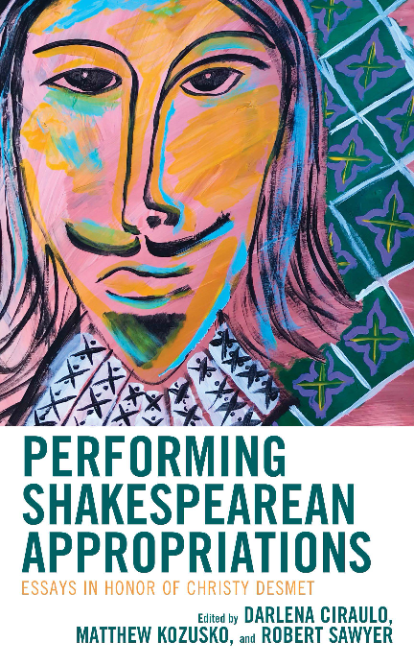What if some Shakespearean characters are transgender or played by trans actors? Examples include Viola as pageboy Cesario in Twelfth Night, Falstaff as the Witch of Brainford in The Merry Wives of Windsor, Rosalind as Ganymede in As You Like It, and Imogen disguised as the boy Fidele in Cymbeline. Different kinds of trans practices elicit contrasting reactions. While trans masculine acts, such as those staged by Viola’s Cesario, are often performed in the vein of empowerment, trans feminine characters, such as Falstaff’s Witch of Brainford, are ridiculed by other characters and by the audiences.
When actors embody a role, their own identities—perceived or self-claimed—enrich the meanings of the performance. One of the key aspects of identities on stage is gender as a social practice. In Shakespeare’s plays, gender variance is more than just a dramatic device derived from the early modern practice of cross-dressing.
What is “true” in a fictional character can be determined by the rhetoric in various dramatic conventions such as trial scenes and formal debates. By taking into consideration a character’s actions and choice of words we can deduce their personal truth in a performative context.
Gendered language plays an important role in the acclaimed South Korean period drama film The King and the Clown (dir. Lee Joon-ik, 2005). The tragicomic film chronicles the life of a masculine and a trans-feminine vagabond performers—Jang-saeng and Gong-gil—in the fifteenth-century Joseon Dynasty. The trans-feminine Gong-gil is played by a cisgender actor.
As a catalyst for the twists and turns of the plot, Gong-gil is an Ophelia figure. She is unable to express herself and lack inner direction. Like Ophelia, Gong-gil’s life is influenced by men around her. Like Ophelia, Gong-gil is objectified by the male gaze as a love interest. In one scene Gong-gil wears an opera headdress ornately decorated with flowers, similar to Ophelia’s garland. In another scene, Gong-gil is found lying in a pool of their blood after a suicide attempt.
Notably the trans protagonist is neither in flamboyant drag nor struggling with gender transition. She presents as female throughout the entire film. There is no gender crossing to speak of. She is not moving between different identities. The King and the Clown enables its central trans-feminine character to simply exist as themselves without justification.
Over time, the king, a composite of Hamlet and Claudius, becomes fond of Gong-gil. The king is clearly drawn to Gong-gil’s appearance as an exotic object, while Gong-gil seems to have sympathy for the unhappy king. This causes displeasure of Nok-su, once the king’s favorite consort.
In one scene, Nok-su storms in on the king and Gong-gil in an intimate scene and taunts Gong-gil about her “real” gender. She tries to undress Gong-gil in front of the king, creating a great deal of tension. Presumably Nok-su’s dramatic act of “gender reveal” is to expose Gong-gil’s as an abject subject with alleged physical deficiencies and thereby dissuade the king from bestowing further favors on Gong-gil.
Nok-su is as frustrated by Gong-gil’s version of femininity as she is jealous of the newcomer who is replacing her as the king’s favorite subject. The act of peeling the dress off Gong-gil is symbolic of her desire to authenticate embodied identities, as if to up the ante in the competition.
Such revelation scenes are a familiar trope in transgender narratives. These scenes are part of what is known as the reveal in trans cinema, a device of exposure and a shock device about a bodily truth. Such scenes subject trans characters to “the pressures of a pervasive gender/sex system that seeks to make public the ‘truth’ of the trans person’s gendered and sexed body.” Such revelation scenes reenact struggles over the body’s meanings.
Transgender theory enables us to reclaim gender variant performances and expand our collective archive of global Shakespeare. Multiple gendered crossings in The King and the Clown, among other works, disrupt cisgender assumptions. By reading Gong-gil as a transgender Ophelia we build a more capacious theoretical model to elucidate not only performance histories of sexual transformation.
Performance theories inflected by transgender studies destabilize the line between normalcy and the deviant in and beyond scripted performance.
==================
Excerpted from Alexa Alice Joubin, “Transgender Theory and Global Shakespeare,” in Performing Shakespearean Appropriations: Essays in Honor of Christy Desmet, ed. Darlena Ciraulo, Matthew Kozusko, Robert Sawyer (Lanham, MD: Fairleigh Dickinson University Press, 2022), 161-176.





